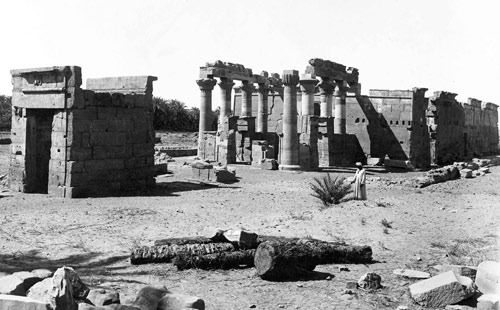 Traveling Exhibitions
Traveling Exhibitions Traveling Works of Art
Traveling Works of Art Conservation Projects
Conservation Projects Excavations
Excavations Fellows
Fellows Exchanges & Collaborations
Exchanges & Collaborations Multiple Items
Multiple Items
The Met Around the World presents the Met’s work via the global scope of its collection and as it extends across the nation and the world through a variety of domestic and international initiatives and programs, including exhibitions, excavations, fellowships, professional exchanges, conservation projects, and traveling works of art.
The Met Around the World is designed and maintained by the Office of the Director.
Traveling
Exhibitions
The Met organizes large and small exhibitions that travel beyond the Museum's walls, extending our scholarship to institutions across the world. See our national and international traveling exhibition program from 2009 to the present.
Traveling
Works of Art
The Met lends works of art to exhibitions and institutions worldwide to expose its collection to the broadest possible audience. See our current national and international loans program.
Conservation
Projects
The preservation of works of art is a fundamental part of the Met's mission. Our work in this area includes treating works of art from other collections. See our national and international conservation activities from 2009 to the present.
Excavations
The Met has conducted excavations for over 100 years in direct partnership with source countries at some of the most important archaeological sites in the world. Today we continue this tradition in order to gain greater understanding of our ancient collections. See our national and international excavation program from the Met's founding to the present.
Fellows
The Met hosts students, scholars, and museum professionals so that they can learn from our staff and pursue independent research in the context of the Met's exceptional resources and facilities. See the activities of our current national and international fellows.
Exchanges & Collaborations
The Met's work takes many forms, from participation in exchange programs at partnering institutions and worldwide symposia to advising on a range of museum issues. These activities contribute to our commitment to advancing the work of the larger, global community of art museums. See our national and international exchange program and other collaborations from 2009 to the present.
 Kharga Oasis: the temple of Hibis before work began. Photographer unknown, 1908 (K342). Archives of the Egyptian Expedition, Department of Egyptian Art.
Kharga Oasis: the temple of Hibis before work began. Photographer unknown, 1908 (K342). Archives of the Egyptian Expedition, Department of Egyptian Art. Kharga Oasis: the temple of Hibis after reconstruction. Photographer unknown, 1937 (K3-839). Archives of the Egyptian Expedition, Department of Egyptian Art.
Kharga Oasis: the temple of Hibis after reconstruction. Photographer unknown, 1937 (K3-839). Archives of the Egyptian Expedition, Department of Egyptian Art.
Composite Papyrus Capital
Late Period, Dynasty 30, reign of Nectanebo II, 360–343 B.C.
Egypt, Western Desert; Kharga Oasis, Hibis, MMA
Rogers Fund, 1910 (10.177.2)

Egypt
1909–1939
The temple, mainly built or decorated under the rule of the Persian king Darius the Great (after 500 B.C.), is the only preserved Egyptian temple of the period between the end of the New Kingdom and the conquest by Alexander the Great. An entrance kiosk featuring slender columns with beautiful palm and composite capitals was added under King Nectanebo I (380–362 B.C.). The inscriptions and wall reliefs of the temple interior offer an extraordinary collection of material for the study of Late Period religious beliefs and practices. One of the capitals was purchased—before a reconstruction was thought feasible—for the Museum and can now be admired in the Dendur wing (10.177.2).
The temple, heavily damaged after 1823, was well restored by Émile Baraize. Unfortunately, the rising groundwater has weakened the foundations since, necessitating a major rescue campaign, which is underway now. The Metropolitan Museum's work at Kharga established a precedent for the study and appreciation of the monumental heritage of the Egyptian oases.
Partnered with The Egyptian Antiquities Service.

